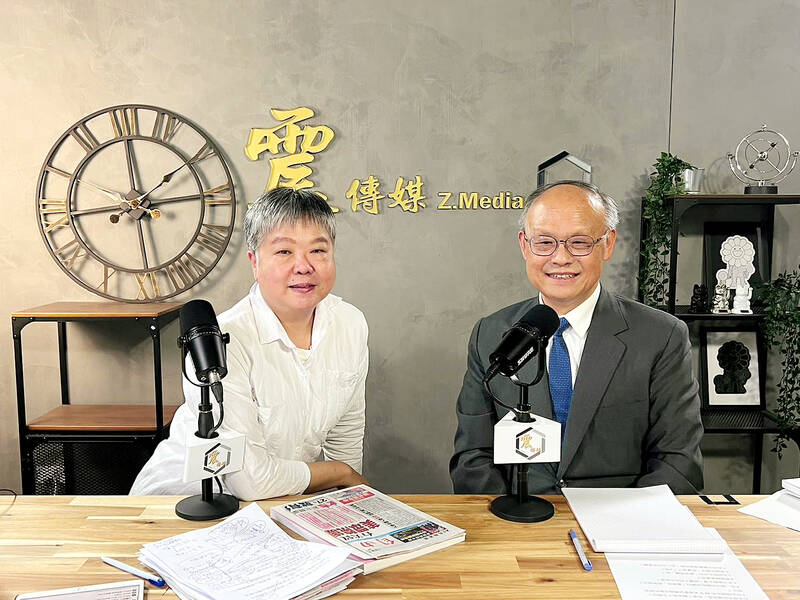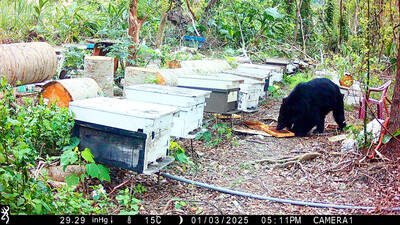The US House of Representatives on Wednesday approved the first agreement under the US-Taiwan Initiative on 21st-Century Trade, sending it to the US Senate where it is expected to be ratified.
The initiative streamlines customs checks, looks to improve regulatory procedures and establishes anti-corruption measures.
The American Institute in Taiwan signed the agreement on June 1 with the Taipei Economic and Cultural Representative Office in the US.

Photo courtesy of Z.Media
In Taipei, Minister Without Portfolio John Deng (鄧振中) said that expanding agricultural exports to the US would be a priority issue in negotiations of the second phase of the initiative.
Deng in an interview with media personality Frances Huang (黃光芹) said that environmental protection and labor issues would also be high on the agenda for negotiations in the second part of the trade initiative with the US.
The agreement covers 81 articles in five key areas and is a complete pact, Deng said, adding that it has legal basis and is a formal accord, unlike most of the deals previously signed with the US, which were in the form of memorandums.
The agreement covers the areas of customs administration and trade facilitation, good regulatory practices, services domestic regulation, anti-corruption, and small and medium-sized enterprises.
Taiwan and the US are to hold trade talks on the more complicated topics of environmental protection, labor and agricultural issues, Deng said.
On the issue of agriculture, the focus would be on Taiwan’s exports of agricultural products to the US, he said.
China used to be the largest market for Taiwanese agricultural exports.
However, Beijing has over the past few years banned the importation of several Taiwanese agricultural products, prompting the nation to shift exports to Singapore and Japan, he added.
The US is the biggest market for Taiwan’s agricultural goods and processed agricultural products, Deng said.
Regarding environmental protection, Taiwan would seek an environmental protection agreement with Washington, Deng said.
The government also hopes to create a favorable work environment for Taiwanese, he added.
The topics in the next phase of talks would be “a little more difficult” to discuss than the previous five items, Deng said.

SHIPS, TRAINS AND AUTOMOBILES: The ministry has announced changes to varied transportation industries taking effect soon, with a number of effects for passengers Beginning next month, the post office is canceling signature upon delivery and written inquiry services for international registered small packets in accordance with the new policy of the Universal Postal Union, the Ministry of Transportation and Communications said yesterday. The new policy does not apply to packets that are to be delivered to China, the ministry said. Senders of international registered small packets would receive a NT$10 rebate on postage if the packets are sent from Jan. 1 to March 31, it added. The ministry said that three other policies are also scheduled to take effect next month. International cruise ship operators

NUMBERS IMBALANCE: More than 4 million Taiwanese have visited China this year, while only about half a million Chinese have visited here Beijing has yet to respond to Taiwan’s requests for negotiation over matters related to the recovery of cross-strait tourism, the Tourism Administration said yesterday. Taiwan’s tourism authority issued the statement after Chinese-language daily the China Times reported yesterday that the government’s policy of banning group tours to China does not stop Taiwanese from visiting the country. As of October, more than 4.2 million had traveled to China this year, exceeding last year. Beijing estimated the number of Taiwanese tourists in China could reach 4.5 million this year. By contrast, only 500,000 Chinese tourists are expected in Taiwan, the report said. The report

The Forestry and Nature Conservation Agency yesterday launched a gift box to market honey “certified by a Formosan black bear” in appreciation of a beekeeper’s amicable interaction with a honey-thieving bear. Beekeeper Chih Ming-chen (池明鎮) in January inspected his bee farm in Hualien County’s Jhuosi Township (卓溪) and found that more than 20 beehives had been destroyed and many hives were eaten, with bear droppings and paw prints near the destroyed hives, the agency said. Chih returned to the farm to move the remaining beehives away that evening when he encountered a Formosan black bear only 20m away, the agency said. The bear

Chinese embassy staffers attempted to interrupt an award ceremony of an international tea competition in France when the organizer introduced Taiwan and displayed the Republic of China flag, a Taiwanese tea farmer said in an interview published today. Hsieh Chung-lin (謝忠霖), chief executive of Juxin Tea Factory from Taichung's Lishan (梨山) area, on Dec. 2 attended the Teas of the World International Contest held at the Peruvian embassy in Paris. Hsieh was awarded a special prize for his Huagang Snow Source Tea by the nonprofit Agency for the Valorization of Agricultural Products (AVPA). During the ceremony, two Chinese embassy staffers in attendance